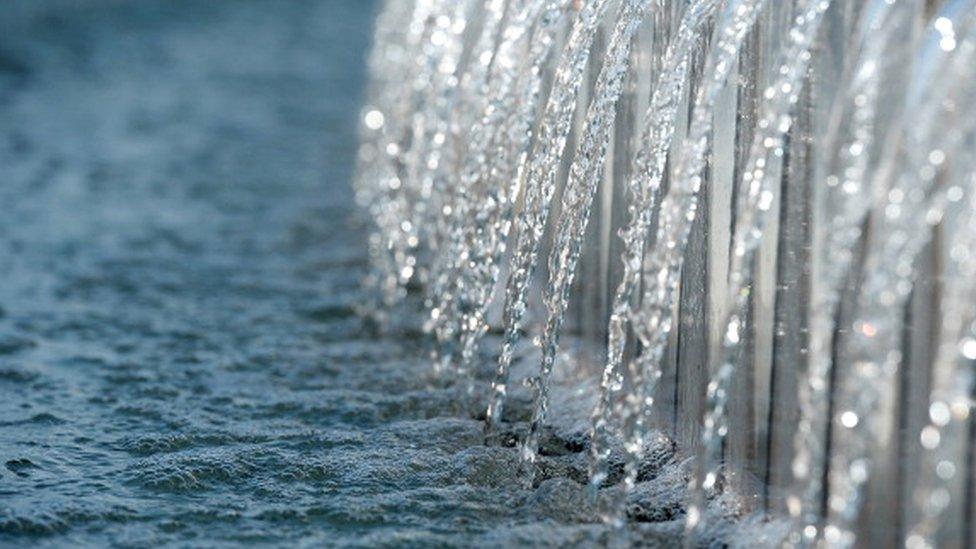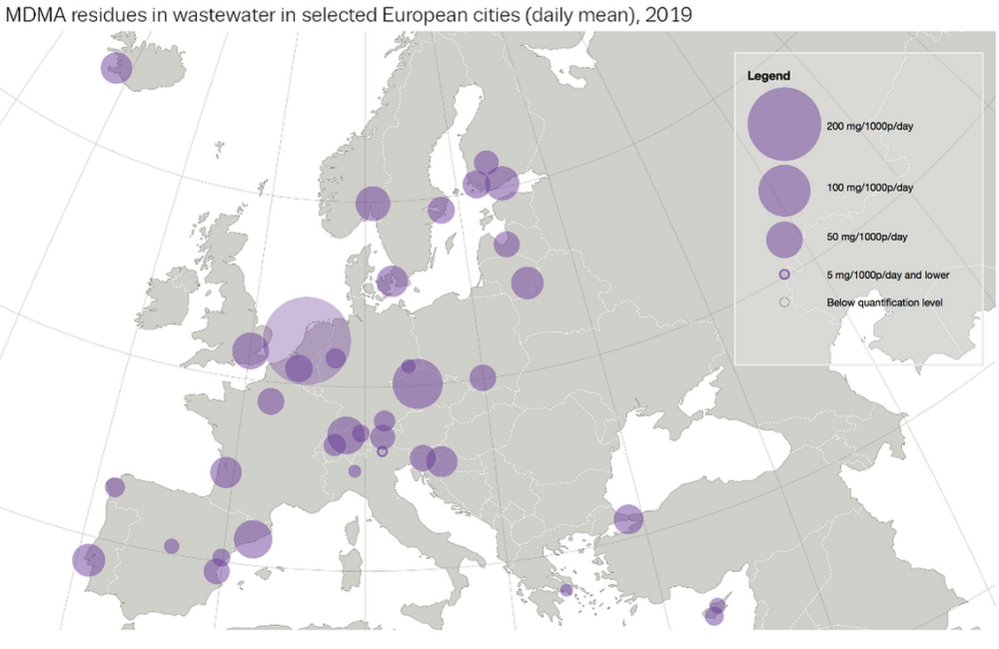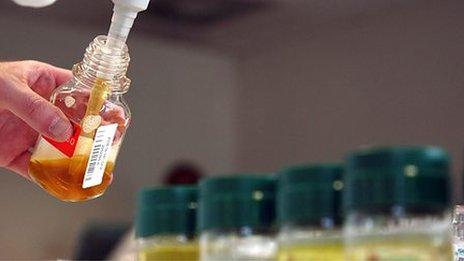EU sewage tests show ‘ecstasy is no longer a niche drug’
- Published

Tests were carried out on samples of wastewater from 68 cities in 23 European countries
A study of wastewater from nearly 50 million people in Europe has revealed a growing trend for the consumption of illegal drugs.
The EU's drug monitoring body analysed sewage samples from 68 cities in 23 European countries in March 2019.
Sewage was tested for traces of four illicit drugs: amphetamine, cocaine, MDMA (also known as ecstasy) and methamphetamine.
The tests showed an overall rise in the four drugs compared to previous years.
More than half of the 42 cities where wastewater was tested reported an increase in ecstasy residues compared to 2018, the study found.
The agency said the increase suggested ecstasy was no longer "a niche or sub-cultural drug limited to dance clubs and parties", but was now "being used by a broader range of young people in mainstream nightlife settings".

The study suggested that ecstasy was no longer "a niche or sub-cultural drug" in European cities
The highest residues of ecstasy were found in cities in Belgium, Germany and the Netherlands.
The European Monitoring Centre for Drugs and Drug Addiction, external (EMCDDA) has been carrying out research on wastewater since 2011.
When consumed, drugs are eventually excreted and urinated before ending up in the sewers.
By testing sewage water at treatment plants, scientists from the EMCDDA can "estimate the quantity of drugs consumed by a community".
The study said "cocaine use remains highest in western and southern European cities", particularly in the Netherlands, Belgium, Spain and the UK.
In previous studies, London has consistently ranked among the cities which has the highest concentration of cocaine in its sewers.
The study of wastewater across the world has been increasing in recent years as scientists attempt to understand drug-taking habits over a longer period.
"Wastewater analysis has demonstrated its utility over the last decade as an important new drug monitoring tool and a complement to more established monitoring methods," director of the EMCDDA, Alexis Goosdeel, said.
"By delivering almost real-time data on drug use patterns, both geographically and over time, this novel approach can offer a valuable snapshot of drug use in key cities in Europe and an insight into emerging changes in behaviour."
Other key findings of the study include:
Of the 42 cities with wastewater data on methamphetamine for 2018 and 2019, 17 cities reported an increase. However, methamphetamine residues were very low to negligible in most locations
Most drug-taking appears to happen at weekends, with more than 75% of cities showing higher residues of cocaine and MDMA between Friday and Monday
For the four drugs tested, residues were higher in large cities, reflecting their social and demographic characteristics

You may also be interested in:
Chelsea, whose parents are both drug addicts, says people can show more compassion
- Published4 June 2015
- Published12 September 2014

- Published15 December 2016
